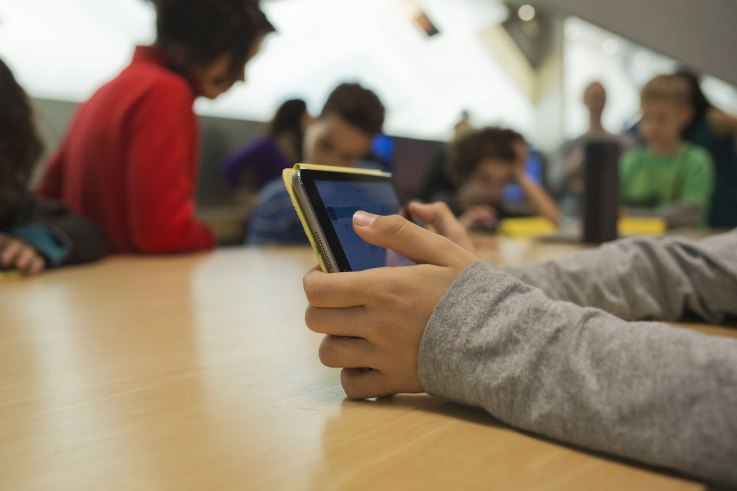
Just as Uber is under fire once again, Lyft confirms a huge new funding round, Elon Musk reveals plans forelectric trucks and Apple is divinginto secret special projects. These are the top tech stories of the week. You can also get this post as the Weekly Roundup newsletter delivered to your inbox on Saturdays, if thats more your style.
A report surfaced claiming that Uber secretly tracked Lyft drivers using an internal software program called Hell. Hell not only let Uber see how many Lyft drivers were available for rides and what their prices were, but also figure out which of its drivers were also driving for Lyft. Once Uber knew when and where they tended to log onto Lyft, the company was able to offer drivers financial incentives convincing them to use only Uber. Some lawyers are saying Uber could face civil legal claims related to its use of the software. It was also announced this week that Rachel Whetstone, Ubers head of communications and policy, is leaving the company. We know that her reason for leaving is complex, butthere was some tension between Whetstone and Uber CEO Travis Kalanick over bad press.
2. Apple may have hired biomedical researchers to work on a secret project
Apple seems to be on a special projects hiring spree. A new report is claiming thatApplehas hired a group of biomedical researchers to work on a secret project to monitor diabetic patients using sensors.Normally, patients monitor their glucose by pricking themselves to get a blood sample, so not having to do that any more would be a real game-changer for peopleaffected by diabetes. It was reported that Apple is also putting together a team to design its own battery management chip for the iPhone. By designing its own chips, Apple could go a bit further than the standard power management chip, making the iPhone slightly more efficient inpower usage. This way, the company could get a leg up onAndroid makers when it comes to battery life.
In other Apple news, the California DMV released a list of companies allowed to test autonomous vehicles on the roads of California. The last name of the long list is Apple.It doesnt necessarily mean that youre going to see an Apple car on the road tomorrow but it means that the company has the green light tostart real-world tests at some point in the future.
Tesla CEO Elon Musk revealed on Twitter that Tesla plans to show off an electric pickup truck sometime within the next two years. Musk also announced that Tesla will reveal its electric semi truck, the Tesla Semi, in September of this year.
4. Lyft confirms major $600million raise, bringing total funding to $2.61 billion
Lyft confirmedon its blog that it has raised a total of $600 million in new funding, with a post-money valuation of $7.5 billion. The funding brings Lyfts total funding to $2.61 billion, which is a gigantic amount unless you consider the incredibly competitive space within which they operate, which includes Uber, with $8.8 billion invested across 13 rounds.
5.Instagram Stories is now bigger than Snapchat
Instagram Stories hit 200 million daily active users, surpassing Snapchat Stories 161 million users it reported in March when the parent company, Snap, went public. Instagram is also getting faster at copying Snapchat features; it also added Instagram Direct and an AR Stories feature this week.
6. Yext sees successful IPO on the NYSE
This week saw another tech IPO as Yext, the company that helps businesses power their location data, went public on the New York Stock Exchange. After pricing shares above the expected range at $11, the price rose 21 percent to $13.29 by the end of the first day of trading.
7. Nintendos NES Classic shipments come to a close
All good things must come to an end. This week Nintendo saidthat it will be sunsetting the short-lived but beloved NES Classic Edition the $60 console that gave us 30 classic Nintendo games. However, the language was not so clear, indicating room for apotential release in the future: Throughout April, [Nintendo of America] territories will receive the last shipments of Nintendo Entertainment System: NES Classic Edition systems for this year. So if you dont have one yet, theres still hope. But getready to pay big bucks in the meantime.
8. Flipkart has a fresh$1.4 billion raise
Amazon and Alibaba had better watch out. Following months of rumors, Indian e-commerce giant Flipkart has confirmed that it has raised $1.4 billion in new funding at a post-money valuation of$11.6 billion. The deal includes some big-name strategic investors: Chinas Tencent, eBay and Microsoft, whichjoin existing Flipkart backers that include Tiger Global, Naspers, Accel and DST Global.
9. Hulus live TV to cost $39.99 per month
More details emerged on Hulus play to kill the cable box. The pricing for Hulus live TV service, a competitor with cable television as well as a host of other streaming TV services like Sling TV, DirecTV NOW and YouTube TV will likely be $39.99 per month, with ads and access to Huluson-demand library.
10. Andre Iguodala spills Magic Leap secrets
Magic Leap had some of its secrets spilled by Golden State Warriors small forwardAndre Iguodala.In an interview, Iguodala talked aboutaugmented reality and undoubtedly skated the lines of violating his Magic Leap NDA as he described his demo with the product, which he called a disruption of life. Iguodala gave some interesting insight into what a Magic Leap interface might look like, saying that in one demonstration he stuck his hand out and a character appeared in his hand that acted as a digital assistant for the device, something Iguodala compared to Apples Siri. He referenced the characters ability to control smart-home devices, as well as other aspects of the operating system.
11. Qualtrics is holding on IPO
Utah-based SaaS company Qualtrics IPO many have beenexpecting is on hold for now. The online market research platform has just raised its third round for $180 million at a whopping $2.5 billion valuation.
Weekend reads
Why do airlines overbook their flights?
You may have seen an airline offer someone $500 to voluntarily give up their seat on a flight because they are overbooked. If you are going to a funeral, to an important meeting or if youre a doctor on your way to see a patient, that may not work. If youre on vacation, however, and you figure that $500 to spend on another flight later in the year means a free trip to visit the family, you may be willing to let yourself be bumped off the flight. But why do airlines overbook flights? Heres a detailed explanation.
How I made my own VPN server in 15 minutes
People are (rightfully) freaking out about their privacy as the Senate voted to let internet providers share your private data with advertisers. While its important to protect your privacy, it doesnt mean that you should sign up to a VPN service and tunnel all your internet traffic through VPN servers. Heres how one writer made their own VPN server in 15 minutes.
Read more: https://techcrunch.com/2017/04/14/weekly-roundup-ubers-hell-ish-week-teslas-plans-for-trucking/















/https%3A%2F%2Fblueprint-api-production.s3.amazonaws.com%2Fuploads%2Fcard%2Fimage%2F441565%2F802b75e8-191d-4730-b5fe-59d8f6b03a6c.jpg)

